A Bit About Greek Door Knockers!
For many years I’ve had an obsession with photographing doors and windows. There is something really evocative about an old, ornate door that through it’s peeling layers of paint, shows the patina of time. It’s not just about the external appearance, it’s the curiosity of what lies beyond, the lives that have been lived in that household and what they have seen through their windows over the years.
As well as the door, I’ve also become intrigued by door knockers – especially Greek door knockers. Many years ago I started noticing the hand shaped knockers usually displaying a ring on a finger. Then there are the lion shaped knockers that stand guard over the entrance to the homestead.
I decided to do a little bit of research to find out a bit more about the door knockers and it seems that Greece itself, and Athens in particular developed the beginnings of what we now know as door knockers.
It seems that back in the days of Yore – otherwise known as Ancient Greece, the wealthy Athenians didn’t like the idea of unannounced guests marching into their mansions. Apparently the more ‘uncouth’ Spartans thought it acceptable to barge into any household! To combat this the more sophisticated Athenians gave their slaves the task of manning the door to announce the arrival of visitors. Slaves being slaves lacked the motivation to do this rather monotonous job day in and day out and often fell asleep or just absconded.
Not being ones to take any of the slavish crap, the wealthy masters struck upon the idea of chaining the slaves to the front door via a large metal ring fastened to a metal back plate upon which the chain was attached. They could no longer run away and also if they had fallen asleep, the visitor would rattle the chain or knock the metal ring upon the door. Hence the beginnings of the door knocker.
This was later adopted by the Romans and migrated henceforth! Over the years they became more much elaborate and the designs often had much significance.
The lion head door knocker gives the impression of strength and power and symbolically acts as a protector of the home. Here are a couple from my collection. Hover over the image with your mouse to see where the photograph was taken.
The door knockers that really grabbed my attention are the door knockers shaped like a hand. I noticed that some are left hands and some are right. Some are adorned with rings and some are plain. At first I thought that the ones with what I thought were wedding rings were perhaps bought as a gift for a newly married couple or even part of a dowry to decorate the door of the new homestead.
My research tells me that the hand is in fact based on the hand of Fatima and is believed to have migrated from Middle Eastern countries and around the Mediterranean – just as in the way food dispersed itself too. (My Egyptian husband swears the Egyptians invented Moussaka – but don’t tell the Greeks!). The hand of Fatima is believed to offer protection.
I also read that in it’s earliest incarnations that in the Middle East two door knockers would be present on the door. One a female hand that made one noise and the second a male hand that made a different noise. This was back in the day when women would stay out of sight of men. viewing the goings on in the street from behind arabesque carved screens. The sound of the door knocker would indicate whether it was a man or woman at the door and the lady of the house would know whether to open the door or not.
The hand knockers below are mainly from Greece but also a couple from the Alicante region of Spain where of course there is a large Moorish influence.
I’ve also encountered a couple of door knockers from Greece which I have assumed they represents the household with maritime or fishing connections. This may be a big assumption but it makes sense to me!
And then there are the ones that don’t fall into any of the above categories.
I’ll continue to add to my collection though I find I have to be rather furtive when taking the photographs. I do get some strange looks when closely inspecting a door knocker – it’s not a normal activity surely? Anyway – who cares about normal!

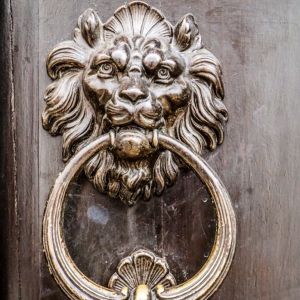
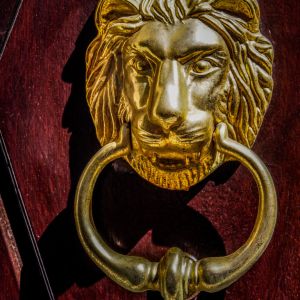
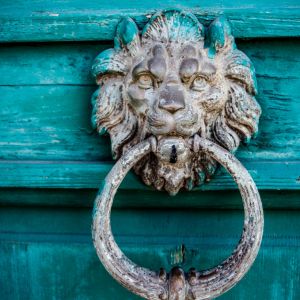
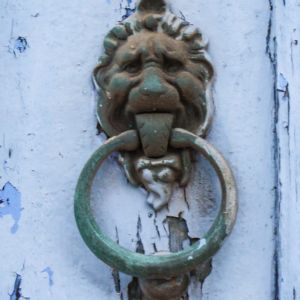
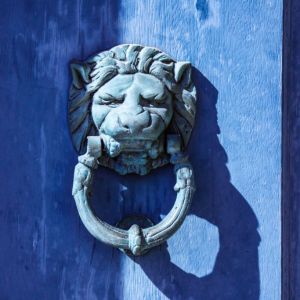
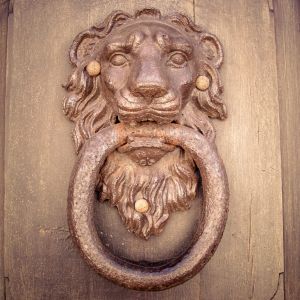
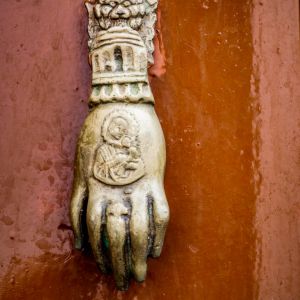
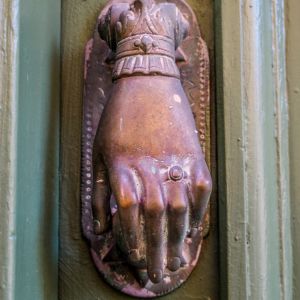
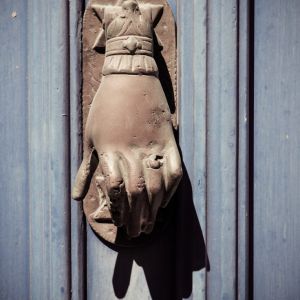
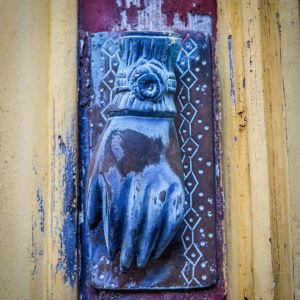

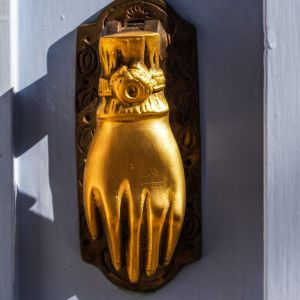
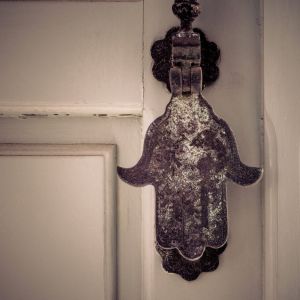
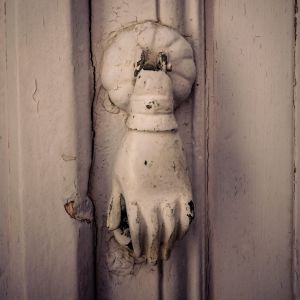
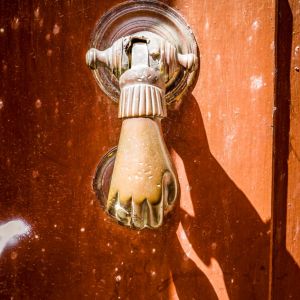
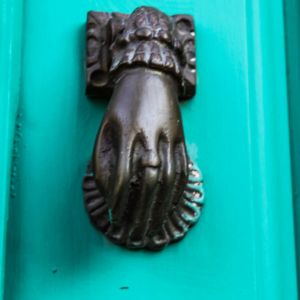

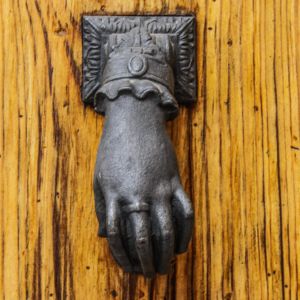
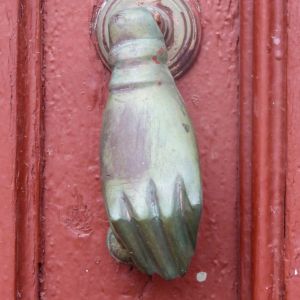
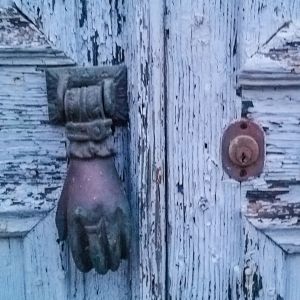
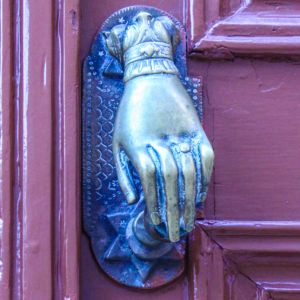
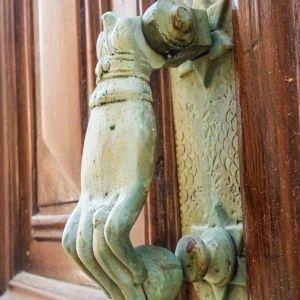
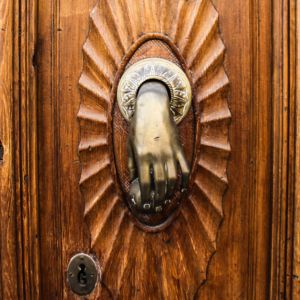
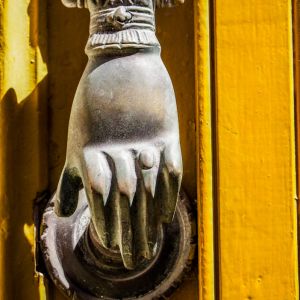
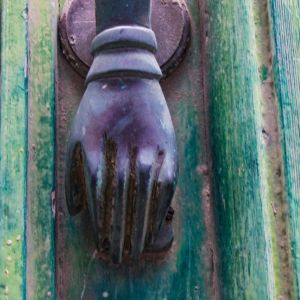
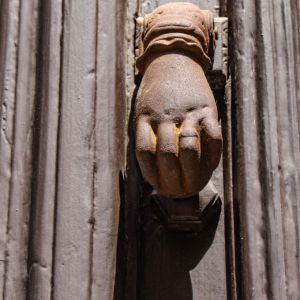
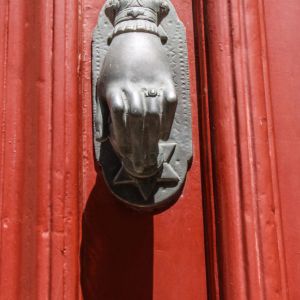

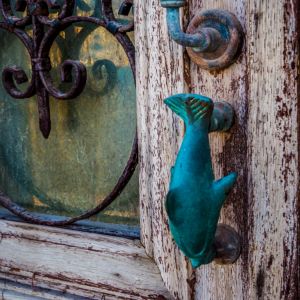
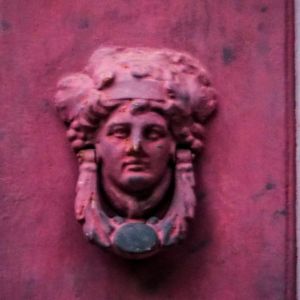
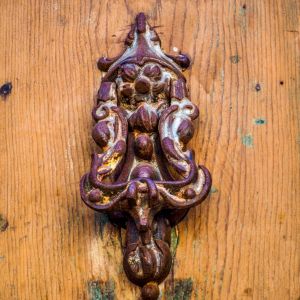
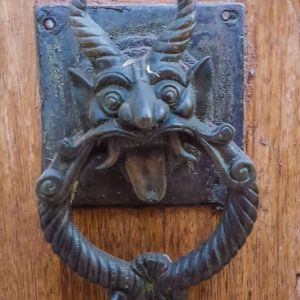
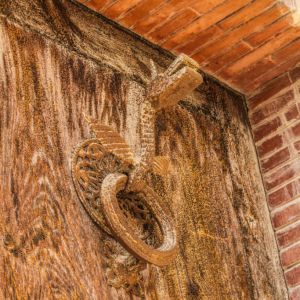






Beautiful photos, i saw so many door knobs identical to the one you photographed in Symi in Ayvalik, Turkey which used to be 97% Greek populated until 1923. I came across your post while i was searching the meaning of such door knobs
Thank you so much for you feedback on my post about door knockers. I’ve been a bit obsessed with them for quite a few years. We’ve even got a Facebook group called the Door Knockers of Greece but I think we’ve almost exhausted every type of door knocker design there is! Yes the history around the Greek and Turkish population exchange is fascinating. I’ve written about it quite a bit in my last trip in October. If you find out any further information about door knockers do let me know – it’s a very interesting subject. ❤️❤️❤️